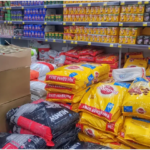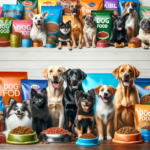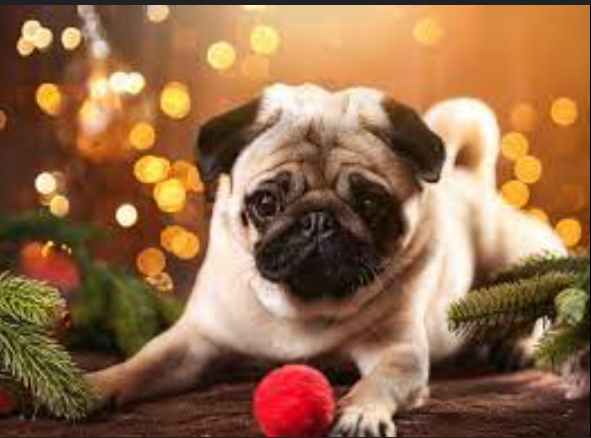Owning a pug comes with a lot of joy and cuddles, pugtips but it also requires understanding the unique needs of this charming breed. Whether you’re a new pug parent or have years of experience with these delightful dogs, “pugtips” can make a significant difference in your pug’s overall health, happiness, and longevity. Pugs, with their distinctive wrinkled faces and compact bodies, have specific care needs that every owner should be aware of to ensure they thrive.
Pugtips: Essential Care and Maintenance for Your Pug
Pugs are a breed that captivates the hearts of dog lovers everywhere. Their playful personalities and adorable appearance make them one of the most popular small dog breeds. However, they are also prone to health issues that can affect their quality of life. Knowing the best pugtips can help you prevent common problems, ensure a balanced lifestyle, and provide the care your pug deserves.
Understanding the Unique Needs of Pugs
Before diving into specific pugtips, it’s important to understand what makes this breed so unique. Pugs are part of the toy group, known for their affectionate and charming personalities. However, their brachycephalic (short-nosed) structure makes them susceptible to respiratory issues, heat sensitivity, and other health concerns.
Pugs also tend to have sensitive skin and can easily develop allergies. Their stocky build, coupled with a love for food, often leads to weight gain, which can exacerbate joint and respiratory issues. A careful balance of diet, exercise, and grooming is crucial for maintaining their health.
Best Pugtips for Feeding and Diet
One of the most crucial aspects of caring for a pug is managing their diet. Pugs love food, and their pleading eyes can make it hard to resist giving them extra treats. However, obesity is a significant concern for this breed, as it can lead to more serious health issues like diabetes, joint problems, and breathing difficulties.
Choosing the Right Food for Your Pug
Pugs require a balanced diet that supports their energy levels while avoiding unnecessary weight gain. Look for high-quality dog food with a good balance of protein, fat, and fiber. Opt for brands that list real meat as the first ingredient and avoid fillers like corn, soy, and wheat.
Portion Control is Key
One of the most important pugtips is practicing portion control. Pugs are prone to overeating, so it’s essential to stick to the recommended portion sizes based on your dog’s weight and activity level. Splitting meals into two smaller servings per day can also help prevent overeating.
Healthy Treat Options for Pugs
When giving treats, choose healthy options that won’t add too many extra calories. Low-calorie treats, vegetables like carrots, or fruit slices can make great rewards during training without contributing to weight gain.
Pugtips for Exercise and Physical Activity
Despite their small size and sometimes lazy demeanor, pugs still need regular exercise to stay healthy. Physical activity helps manage their weight and keep their joints and muscles in good condition. However, due to their brachycephalic nature, there are special considerations for exercising a pug.
Daily Walks and Playtime
Short, moderate walks are ideal for pugs. Aim for 20–30 minutes of walking per day, but be mindful of the weather. Pugs do not handle heat well and can easily overheat, so it’s important to walk them during cooler parts of the day, such as early morning or late evening.
Indoor Activities for Pugs
If outdoor exercise isn’t an option, indoor playtime can be just as beneficial. Simple games like fetch, hide-and-seek, or even some agility training with soft toys can provide the stimulation your pug needs.
Preventing Overexertion
Pugs may have bursts of energy, but they tire quickly. It’s important not to overexert them, especially during warm weather. Keep an eye on their breathing—if they start panting heavily or struggling to catch their breath, it’s time to take a break.
Grooming and Skin Care Pugtips
Pugs are notorious for their shedding, so regular grooming is necessary to keep their coat healthy and reduce loose fur around the house. Additionally, their skin folds require special attention to prevent infections.
Brushing Your Pug’s Coat
Pugs have a short coat, but they shed quite a bit, especially during seasonal changes. Regular brushing, at least twice a week, helps remove loose hair and keep their coat looking shiny. A rubber curry brush or a bristle brush works well for this breed.
Cleaning the Wrinkles
One of the most important pugtips for grooming is to clean between the wrinkles regularly. The skin folds on a pug’s face can trap moisture, dirt, and bacteria, leading to irritation or infection. Gently clean these areas with a damp cloth, followed by drying thoroughly to prevent moisture buildup.
Bathing and Nail Care
Pugs don’t need frequent baths, but a bath every 4–6 weeks can help keep their skin healthy. Use a gentle, hypoallergenic dog shampoo to avoid skin irritations. Regular nail trimming is also essential, as overgrown nails can make walking uncomfortable and contribute to joint issues.
Pug Health: Key Pugtips for Preventative Care
Pugs are prone to several health problems due to their physical characteristics. However, by following some preventative health pugtips, you can significantly reduce the risk of these issues and ensure a longer, happier life for your pug.
Brachycephalic Airway Syndrome (BAS)
Pugs are at a higher risk for respiratory issues because of their flat faces. This condition, known as Brachycephalic Airway Syndrome (BAS), can make breathing more difficult, especially in hot or humid weather. To mitigate this, avoid intense exercise and keep your pug in cool, comfortable environments.
Regular Vet Checkups
Frequent vet visits are one of the most important pugtips for health maintenance. Your vet can keep an eye on potential issues like obesity, skin conditions, and eye problems. Regular checkups also help catch any early signs of serious conditions like heart disease or arthritis.
Managing Pug Allergies
Many pugs suffer from allergies, which can manifest as skin irritations, ear infections, or digestive issues. Common allergens include certain food ingredients, pollen, dust mites, and flea bites. If your pug shows signs of allergies, such as excessive scratching or ear discharge, consult your vet for appropriate treatments and dietary adjustments.
Socialization and Mental Stimulation for Pugs
While physical health is essential, a happy pug also needs mental stimulation and social interaction. Pugs are social creatures and thrive on human companionship. Providing them with mental stimulation through training, puzzle toys, and interactive playtime is just as important as physical exercise.
Training Tips for Pugs
Pugs are intelligent dogs, but they can also be stubborn. Training sessions should be short, fun, and reward-based. Positive reinforcement, using treats and praise, works best for pugs. Training not only improves behavior but also strengthens the bond between you and your dog.
Socializing with Other Pets and People
Early socialization is crucial for pugs to develop good manners around other dogs and people. Take your pug to dog-friendly parks, introduce them to different environments, and allow them to interact with new faces. This helps reduce anxiety and ensures they grow up to be well-adjusted dogs.
FAQs
How can I prevent my pug from overheating?
What’s the best type of food for a pug?
How often should I clean my pug’s wrinkles?
Are pugs prone to dental problems?
What’s the best way to exercise a pug?
Can pugs live in hot climates?
Conclusion
Caring for a pug requires attention to their unique needs, from managing their diet to ensuring regular grooming and preventing health issues. By following these essential pugtips, you’ll not only enhance your pug’s quality of life but also strengthen the bond between you and your furry friend. Whether it’s through careful feeding, mindful exercise, or regular vet visits, the love and care you invest in your pug will be returned tenfold in loyalty and affection.







